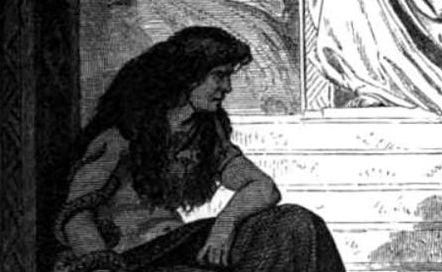Dʰéǵʰōm is the reconstructed name of the Earth in the Proto-Indo-European religion. The Earth-mother (*Dʰéǵʰōm Méh₂tēr) is generally portrayed as the vast and dark abode of mortals, the one who bears all things and creatures.
She is often paired with Dyēus, the daylight sky and seat of the undying gods. Together their relationship is one of contrast and union, since the fructifying rains of Dyēus bring nourishment and prosperity to the Earth, and all those who live upon her.
Dʰéǵʰōm is commonly associated in Indo-European traditions with fertility and growth, but also with death, and is conceived as both the origin and final dwelling place of mortals. Thus Dʰéǵʰōm has a connection with both life and death: all life springs forth from her and so all shall eventually return to her in death. As the crop grows from her moist soil fertilised by the rains from the sky above, the deceased are eventually returned to her eternal embrace.
As we know from the Norse sources, Hel is said to represent this same duality. Hel is also known to dwell underground deep within the Earth where the dead rest, but it’s also from where new life springs forth. She is often described and depicted as a woman of two halves. It is said, that half her body is vibrant with life and the other half in perpetual decay. Symbolically this represents the duality of the goddess, meaning that she is associated with both life and death.
Of course this is in synchronicity with the Earth itself: for Dʰéǵʰōm is always bringing forth new life, yet at the same time everything on Earth is also decaying. A ceaseless cycle of life and death. This duality suggests that the entity we know as the Norse Hel is a manifestation of the original Dʰéǵʰōm Méh₂tēr (Earth-mother).
There are many other earthly goddesses within the Germanic and Norse pantheons, such as: Jord, Nerthus, Gerdr, Gefjon, Sif and Frigg, however all of these goddesses only retained the fertility, growth and motherly attributes of the Proto-Indo-European Earth-mother. However, miraculously perhaps, our ancestors remembered the original and true nature of the Earth-mother and preserved this idea within the goddess they called “Hel”.





Very cool, thanks for the info! I associate Nerthus with this life-death cycle a lot.